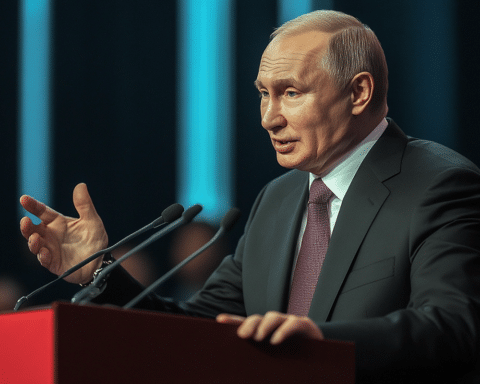The global economy in 2025 is poised to challenge expectations, demanding extraordinary agility from policymakers and businesses alike. A combination of diverging growth rates, persistent inflation, and geopolitical tensions is shaping a landscape where uncertainty reigns supreme.
US Maintains Economic Leadership Amid Global Disparities
The United States is set to continue outperforming other economies, with the International Monetary Fund (IMF) recently revising its 2024 growth forecast to 2.8%. This figure may increase further, reflecting the resilience of the US economy. However, this success contrasts sharply with the struggles faced elsewhere. Growth in the Eurozone remains sluggish at just 0.8%, and emerging economies, including China and India, face mounting challenges. While China is working to meet its lowered growth target of 4.8%, India’s strong performance at 7% could also come under threat.
Despite these challenges, US financial markets have surged ahead, with the S&P 500 index gaining 27% year-to-date. This performance significantly outpaces markets in Europe, China, and India, highlighting disparities in economic and market conditions.
Risks of Fragmentation and Policy Challenges
The global economic structure is becoming increasingly fragmented. Trade, technology, and payment systems are diverging as cracks appear in the Western-led global order. This fragmentation threatens slower growth and persistent inflation, even in relatively strong economies like the US.
Central banks, particularly in major economies, are finding it difficult to stabilize inflation. The Federal Reserve’s hesitancy to provide clear forward guidance has led to volatility in bond markets. As discussions continue over rate cuts, pauses, or skips in December, the lack of strategic direction has further complicated the path to stability.
Meanwhile, the policy environment in Europe remains uncertain. Political instability in France and Germany hampers economic decision-making, and China grapples with balancing long-term growth strategies with short-term economic pressures.
Currency Pressures and the Role of Leadership
Global pressure to diversify reserves away from the US dollar is rising, fueled by interest in alternative payment systems. The potential for such shifts poses risks to the current economic order, particularly as nations reassess their trade and currency strategies.
Amid these dynamics, political leadership and swift policy responses will be critical. Policymakers face the challenge of navigating these economic currents while fostering innovation in areas like artificial intelligence and life sciences. Without decisive action, existing growth drivers could falter, reducing opportunities for long-term prosperity.
A Path Forward
While risks abound, a more stable future is possible if nations adopt cooperative approaches to manage their differences. A form of “globalisation lite,” built on negotiated agreements, could support more sustainable growth and price stability. However, delays in policy adjustments could create further obstacles, making it harder to counter systemic challenges.
As 2025 unfolds, the global economy stands at a crossroads. The choices made by leaders and policymakers will determine whether the world faces greater fragmentation or transitions to a new, more stable economic order.





